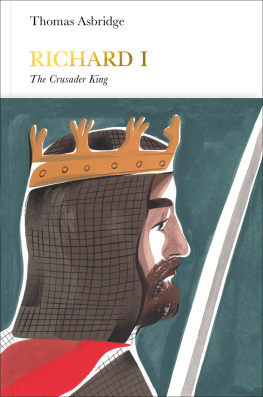Contents
Laura Ashe
RICHARD II
A Brittle Glory
ALLEN LANE
UK | USA | Canada | Ireland | Australia
India | New Zealand | South Africa
Penguin Books is part of the Penguin Random House group of companies whose addresses can be found at global.penguinrandomhouse.com.
First published 2016
Copyright Laura Ashe, 2016
Cover design by Pentagram
Jacket art by Anna and Elena Balbusso
The moral right of the author has been asserted
ISBN: 978-0-141-97990-8
THE BEGINNING
Let the conversation begin...
Follow the Penguin Twitter.com@penguinUKbooks
Keep up-to-date with all our stories YouTube.com/penguinbooks
Pin Penguin Books to your Pinterest
Like Penguin Books on Facebook.com/penguinbooks
Listen to Penguin at SoundCloud.com/penguin-books
Find out more about the author and
discover more stories like this at Penguin.co.uk
Penguin Monarchs
THE HOUSES OF WESSEX AND DENMARK
| Athelstan | Tom Holland |
| Aethelred the Unready | Richard Abels |
| Cnut | Ryan Lavelle |
| Edward the Confessor | James Campbell |
THE HOUSES OF NORMANDY, BLOIS AND ANJOU
| William I | Marc Morris |
| William II | John Gillingham |
| Henry I | Edmund King |
| Stephen | Carl Watkins |
| Henry II | Richard Barber |
| Richard I | Thomas Asbridge |
| John | Nicholas Vincent |
THE HOUSE OF PLANTAGENET
| Henry III | Stephen Church |
| Edward I | Andy King |
| Edward II | Christopher Given-Wilson |
| Edward III | Jonathan Sumption |
| Richard II | Laura Ashe |
THE HOUSES OF LANCASTER AND YORK
| Henry IV | Catherine Nall |
| Henry V | Anne Curry |
| Henry VI | James Ross |
| Edward IV | A. J. Pollard |
| Edward V | Thomas Penn |
| Richard III | Rosemary Horrox |
THE HOUSE OF TUDOR
| Henry VII | Sean Cunningham |
| Henry VIII | John Guy |
| Edward VI | Stephen Alford |
| Mary I | John Edwards |
| Elizabeth I | Helen Castor |
THE HOUSE OF STUART
| James I | Thomas Cogswell |
| Charles I | Mark Kishlansky |
| [Cromwell | David Horspool] |
| Charles II | Clare Jackson |
| James II | David Womersley |
| William III & Mary II | Jonathan Keates |
| Anne | Richard Hewlings |
THE HOUSE OF HANOVER
| George I | Tim Blanning |
| George II | Norman Davies |
| George III | Amanda Foreman |
| George IV | Stella Tillyard |
| William IV | Roger Knight |
| Victoria | Jane Ridley |
THE HOUSES OF SAXE-COBURG & GOTHA AND WINDSOR
| Edward VII | Richard Davenport-Hines |
| George V | David Cannadine |
| Edward VIII | Piers Brendon |
| George VI | Philip Ziegler |
| Elizabeth II | Douglas Hurd |
Prologue
O flattering glass,
Like to my followers in prosperity,
Thou dost beguile me! Was this face the face
That every day under his household roof
Did keep ten thousand men? Was this the face
That like the sun did make beholders wink?
Is this the face which faced so many follies,
That was at last outfaced by Bolingbroke?
A brittle glory shineth in this face.
As brittle as the glory is the face,
For there it is, cracked in a hundred shivers.
Shakespeare, Richard II
In the act of resigning his crown to Bolingbroke, the future Henry IV, Shakespeares Richard asks for a mirror, and stares disbelievingly at his unchanged face. This is a king who has been sustained by a vision, the image of his own glorious kingship. Now unkinged, he cannot make sense of his own face in the mirror; he smashes the glass, and shatters the image. A king is not dismantled from within, as a mans character may be broken down by circumstance. A king has no interior; his whole existence lies in his face, his crown, his glory.
Shakespeares Richard is an amalgam of the chronicle sources, turned to the playwrights dramatic purposes. The play opens in 1397, with a high-handed and immature king; the path to his deposition is inexorable, and his folly and Bolingbrokes usurpation sow the bloody seeds of the Wars of the Roses, which tore England apart in the fifteenth century. History itself knows no such necessities. King Richard II of England was crowned at the age of ten in July 1377, and deposed twenty-two years later, on 30 September 1399. He lived for a few months more, in close imprisonment, and died in February 1400. Contemporary accounts give several different versions of Richards death that he was cruelly starved, that he starved himself out of despair, that he heroically fought off an assassination party of several attackers before being struck from behind and chroniclers observe that many believed he still lived. Henry IV displayed Richards corpse to the public, his face uncovered, in an attempt to convince the populace of his identity and prevent any further attempts to restore him to the throne. In death as in life, Richard was an image offered up for recognition.
Richards face, as he wished it to be seen, is well known to us. He made two great artistic commissions around 1395: the Westminster Abbey portrait, in which he faces us enthroned with crown, orb and sceptre; and the Wilton Diptych altarpiece, where he kneels before the Virgin Mary and Christ Child with a choir of angels, supported by the blessing of the saints King Edmund the Martyr, King Edward the Confessor and John the Baptist. Both images depict a youthful, beardless face; smooth, pale skin and fair hair, with a small mouth and delicately shaped nose. Richards decision at the age of twenty-eight to present himself so boyishly has occasioned some perplexity among historians. But perhaps this was the idealized light in which he saw himself throughout his life.
He had been crowned and anointed as a child, at the culmination of an astonishing display of pageantry and festivity in London, heralded by hundreds of trumpeters and the cheers of thousands, when the fountains ran with wine and beautiful maidens cast golden coins at his feet.

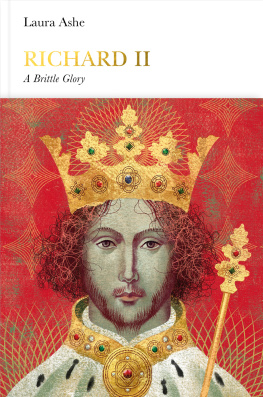
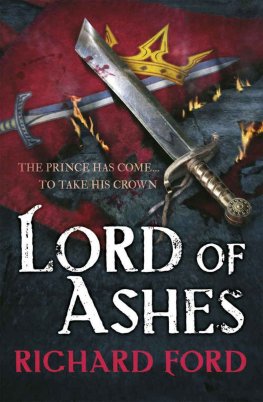


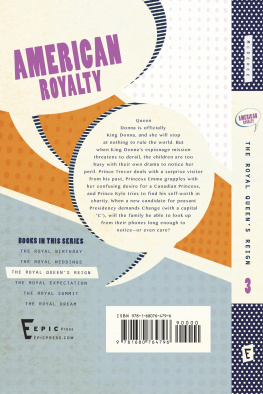

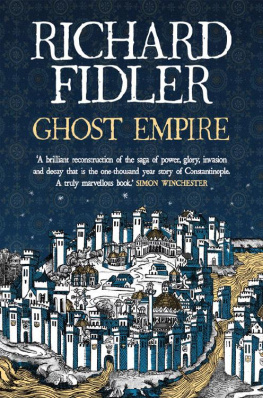
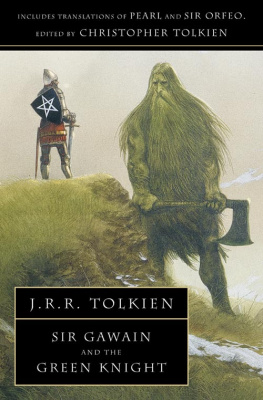
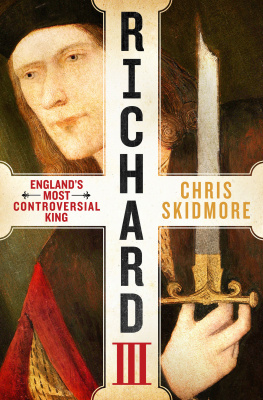
![Richard Woodman [Richard Woodman] - The Disastrous Voyage of the Santa Margarita](/uploads/posts/book/140251/thumbs/richard-woodman-richard-woodman-the-disastrous.jpg)
